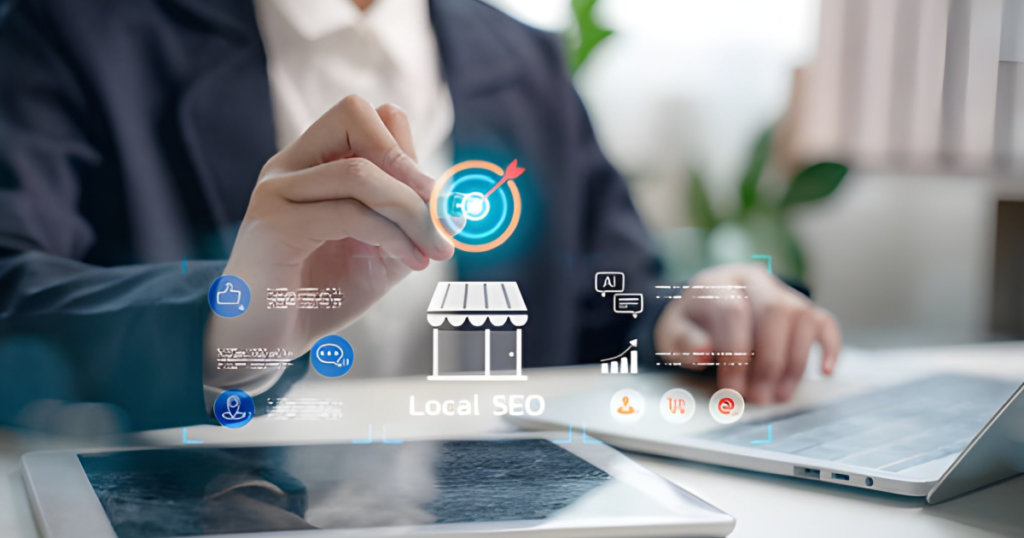Top 10 Digital Marketing Strategies for Small Businesses to Dominate Local SEO in 2025

1. Optimize Your Google Business Profile (GBP) as Your New Homepage
Your Google Business Profile (formerly Google My Business) is the single most critical local SEO asset. It directly feeds the “Map Pack” and local search results.
Action: Fill out every single field completely and accurately, including services, hours, and attributes (e.g., “woman-owned,” “free Wi-Fi”).
Engagement: Use the “Posts” feature weekly to share updates, special offers, events, and new photos. Google rewards active, engaged profiles.
Visuals: Upload a consistent stream of high-quality photos of your store exterior, interior, team, and products.
2. Master Review Collection and Response
Reviews are the digital word-of-mouth that drives both ranking and customer trust. They are a major ranking factor in 2025.
Action: Proactively ask for reviews on Google from every satisfied customer. Make it easy by sending a direct link via SMS or email after a purchase or service.
Response: Respond to ALL reviews—positive and negative—within 24 hours. Use keywords in your responses (e.g., “Thank you for the great experience with our HVAC repair service in Bangalore!”).
3. Achieve NAP Consistency (Name, Address, Phone)
This is a foundational, non-negotiable step. Search engines cross-reference your business information across the web to verify you are a legitimate entity.
Action: Ensure your business Name, Address, and Phone number (NAP) are identical across your website, Google Business Profile, and all online directories (Yelp, Justdial, Bing Places, etc.). Even minor differences (like “St.” vs. “Street”) can hurt your ranking.
4. Build Hyperlocal, Intent-Driven Content
Generic blog posts won’t cut it. You need content that is specific to your immediate neighborhood.
Action: Create content that targets local problems and questions.
Example: Instead of “Best Plumbers,” write “5 Common Plumbing Issues in the Anna Nagar Area and How to Fix Them.”
Example: Instead of “Dinner Ideas,” write “Top 5 Cafés Near [Your Local Landmark] for a Weekend Brunch.” This content establishes you as the local authority.
5. Focus on Mobile-First and Speed Optimization
Most local searches happen on a smartphone, often with high purchase intent (e.g., “plumber near me”). If your site is slow or hard to use on mobile, you lose the customer immediately.
Action: Ensure your website is fully responsive and passes Google’s Core Web Vitals checks for speed. Implement “Click-to-Call” buttons and clearly visible “Get Directions” links on every mobile page.
6. Leverage Local Link Building and Partnerships
Backlinks from local, reputable sources signal to Google that your business is trusted in the community.
Action:
Join your local Chamber of Commerce or professional associations that list members.
Sponsor a local sports team or charity event and ensure they list your business name and website on their “Sponsors” page.
Partner with non-competing local businesses (e.g., a bakery and a coffee shop) for cross-promotions and link exchanges.
7. Optimize for Voice and Conversational Search
With the rise of smart speakers and smartphone assistants, many local queries are now conversational (e.g., “Hey Google, where is the closest pizza place that’s open late?”).
Action: Create an extensive FAQ page using natural, question-based long-tail keywords. Answer questions directly using simple language so AI engines can easily pull your information for “Featured Snippets.”
8. Implement Local Schema Markup
Schema Markup is code you add to your website to help search engines understand the context of your information (like your address, hours, and price range).
Action: Use the LocalBusiness schema markup on your contact or location pages. This code clarifies to Google that your data is, in fact, your business’s name, address, and operating hours, which significantly boosts your visibility in rich search results.
9. Create Location-Specific Landing Pages (For Service Areas)
If your business serves multiple cities or neighborhoods (like a pest control or delivery service), you need individual, optimized pages for each one.
Action: Design unique landing pages for each key service area. Each page must have unique content, local customer testimonials, and an embedded Google Map specific to that location, not just a duplicate copy of your main page.
10. Use Hyper-Targeted Local Ads
Even a small, targeted budget for paid ads can bring immediate local traffic and customers.
-
Action: Run hyperlocal Google Ads (PPC) campaigns targeting just a 2−5 km radius around your store. Use Google Maps Ads to promote your business directly in the search results on the map view when a user is nearby and searching for a related service.
